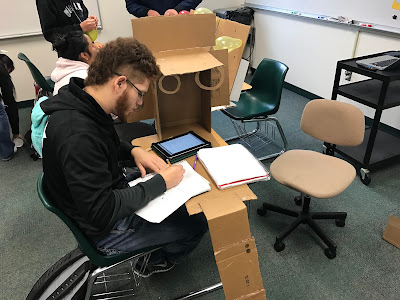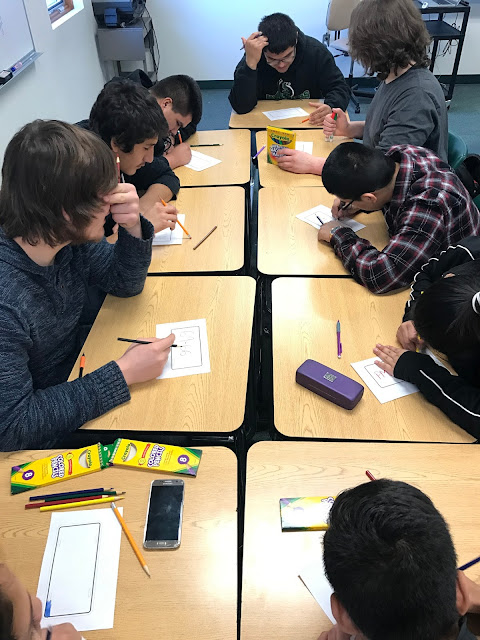First day of our probability unit we watched this video.
Day 1: I chose this video, because most of my students are hispanic and I think the biggest thing in our school right now is empathy. We talked about having games of chance like in the video they just watched, what does chance mean? We did our first section of probability and told them they were going to create their own games, just like Caine did.
We did a 5 question check for understanding and told the students they needed to finish the bottom half of the checklist today.
Here are other great resources including the checklist: http://cainesarcade.com/schools/activitykits/
 |
| Students designing their cardboard games. |
Day 2: We talked about conditional probability. Did another check for understanding on Kahoot. Then I got lots of cardboard boxes from our recycling bin and had to make a quick pit-stop at Dollar General for more cardboard boxes.
Day 3: I had a substitute teacher this day, but students started creating their boxes.
Day 4: We went over theoretical vs experimental probability. I gave students 7 minutes to finish their cardboard arcade games. Then we went over theoretical probability again. We talked about geometrical probability from Day 1. Students were given rulers and yardsticks and had to find the theoretical probability of successfully completing their arcade game.
Day 5: We finished the material for our probability unit. I gave students 5 minutes to make sure their game is playable and to finish anything on the checklist. Then we went over that I would give them 5 minutes to go play other games to get other groups experimental probability, then the partners would switch and the other partner would go play games.
I thought this unit was much better than the 3D dice activity from last year, this project was more hands-on and did a better job of combining the curriculum and the project together.






















